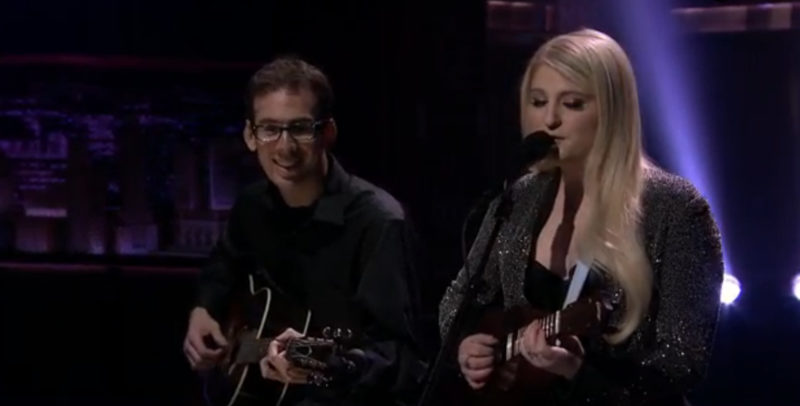How to Choose the Right Songs for Auditions, Showcases and Live Performances
by Coreen Sheehan
Every performance has the potential to impact your career, so it is important to choose the right songs to perform for auditions, showcases and live performances. The comments made by judges, A&R reps and audiences can either help or hurt your prospects for success at your audition, showcase or bookings. Preparing to nail any one of these performances takes a lot of thought before you even begin rehearsing. In the following article, professional singer and instructor Coreen Sheehan offers insights that every performing artist should take to heart.
1. It Must Be PERFECT
Always perform songs that you have honed to perfection. Do not choose songs that you can’t perform flawlessly. If you can play or sing the song at 98 percent, that’s still not good enough! Find a way to correct that two percent or choose something you can perform perfectly. For example, if that two percent is a higher note that is difficult to sing, then sing a lower alternate note that you can deliver perfectly.
However, if there’s another problem you can’t fix in time for the performance, choose a different song. Think about a time when you went to a show and the artist performed great up to a point, but then suddenly played or sang some bad notes. What did you remember about that show? The bad notes are more than likely what you remembered. Most people won’t say, “Well, let’s ignore all the flaws in that performance and only think about the good parts.” In the real world, it doesn’t work out that way. Obviously mistakes can happen during a live show, but if there’s a problem that you know about in advance, avoid showcasing until you’ve solved it by working out the issue(s).
2. Choose the Right Songs for the Audition
If you are instructed to perform only a single song, choose one that is up-tempo. If you are instructed to choose two songs, choose an up-tempo song and a moderate to slower tempo song. Perform the up-tempo song first, followed by the slower song. Often judges will have you perform the first verse and chorus of the song and make their decision based upon just that. Vocalists often think that singing a ballad is the best move. But they may not realize that the judges have been auditioning vocalists all day, or for days! And guess what the judges have been listening to all day long? Ballads. If you sing an up-tempo song, and you sound awesome, you will energize the atmosphere. Grabbing the judges’ attention immediately will help your performance stand out from the rest.
3. Choose the Right Songs for the Showcase
Normally a three song setlist is performed for a showcase event. Showcasing your songs with versatility is best. Your performance should include an up-tempo, slower-tempo and moderate-tempo song selection. Each song should represent your music genre. Sometimes bands/solo artists will play an original song that sounds like it belongs to another genre category. To a professional that will suggest the artists haven’t found their sound yet. It is best to prepare three of your best songs that represent your style and genre. You should also rehearse with segues from one song into another without interruption so that there is a smooth transition from song to song and that all songs are not in the same key. Without a segue, the dead space between each song can seem a bit awkward, especially since you’re only performing three songs. Prepare properly and rock your showcase with segues so you will appear to be a professional.
4. Choose the Right Songs for the Live Performance
Arrange your setlist so it has a dynamic musical flow. When selecting the order of the setlist, make sure that each song’s tempo/BPM (beats per minute) as well as the key signature vary from song to song. The first song and last song of the setlist should be an up-tempo song. It is also important that the first song is one that you can play and sing perfectly without exceptional monitors. Why? Usually during the first song of the set, the M.E. (monitor engineer) and the F.O.H. (front of house) are usually tweaking sound levels, so keep this in mind when selecting your first song. In between the first and last songs, choose those that have different tempos from one another. For example, add a few segues between songs and also allow space between songs for the lead vocalist to speak and interact with the audience. Arranging the song setlist in this order will ensure that your live performance has a dynamic flow.
5. You Must Put in the Time
It is imperative to maintain a regimented rehearsal schedule regardless of upcoming performances. Otherwise, cramming rehearsals will inevitably result in fatigue, which will create further problems. Record audio/ video during your rehearsals and then review and critique yourself. You will positively learn what you need to practice and perfect before your upcoming audition, showcase or live performance.
6. Deliver Pure Emotion
This is what performing is all about! To emote fully in performance, you must allow yourself to let go. “Letting go” means not worrying or doubting yourself. Focusing on what might go wrong prior to performing will vibe-slay the performance. If you fill your head with doubt and worry before getting on stage, the odds will be against you delivering a flawless performance. Instead, think of how much work you’ve put into preparing your songs and what inspired you to perform them. The objective here is to tap that original emotion, that place where you were when you were first inspired to play and sing. If you can tap that emotion, that special energy, you will feel confident and, as a result, stack the odds in favor of you delivering a spectacular performance!
(Reprint permission by Music Connection)
ABOUT THE AUTHOR
COREEN SHEEHAN is a co-author of the new book Five Star Music Makeover published by Hal Leonard Inc. She has toured with major artists (Foo Fighters) worldwide, coached vocalists for a VH1 show who were singing with Rod Stewart and instructs and guest lectures at Musicians Institute, M.I. Japan, the Grammy Museum, UCLA Extension and more. See coreensheehan.net.
For more information on the IAMA (International Acoustic Music Awards), go to: http://www.inacoustic.com


![[Expert Musician Advice] 12 Easy Ways To Make the Audience Love You](https://inacoustic.com/wp-content/uploads/2018/09/Muriel-Anderson-on-Harp-Guitar-500x383.jpeg)

